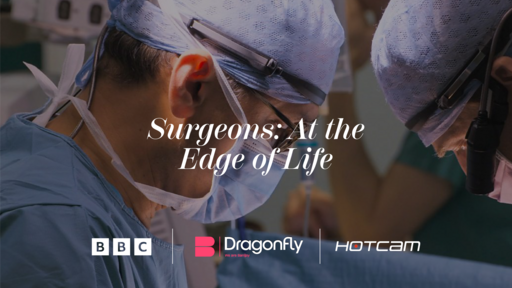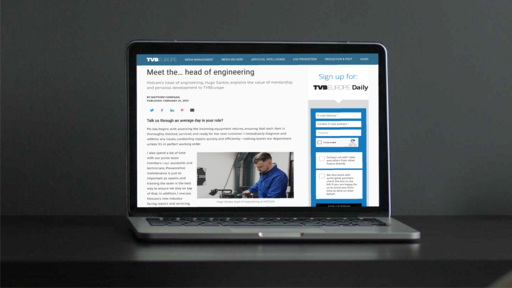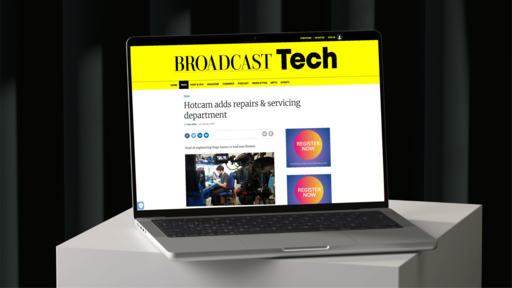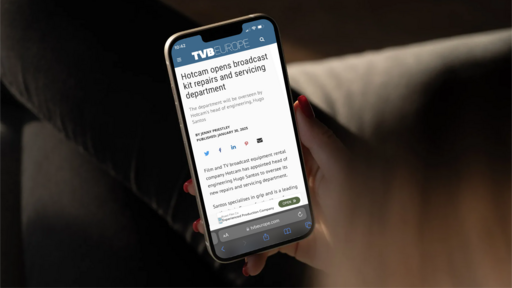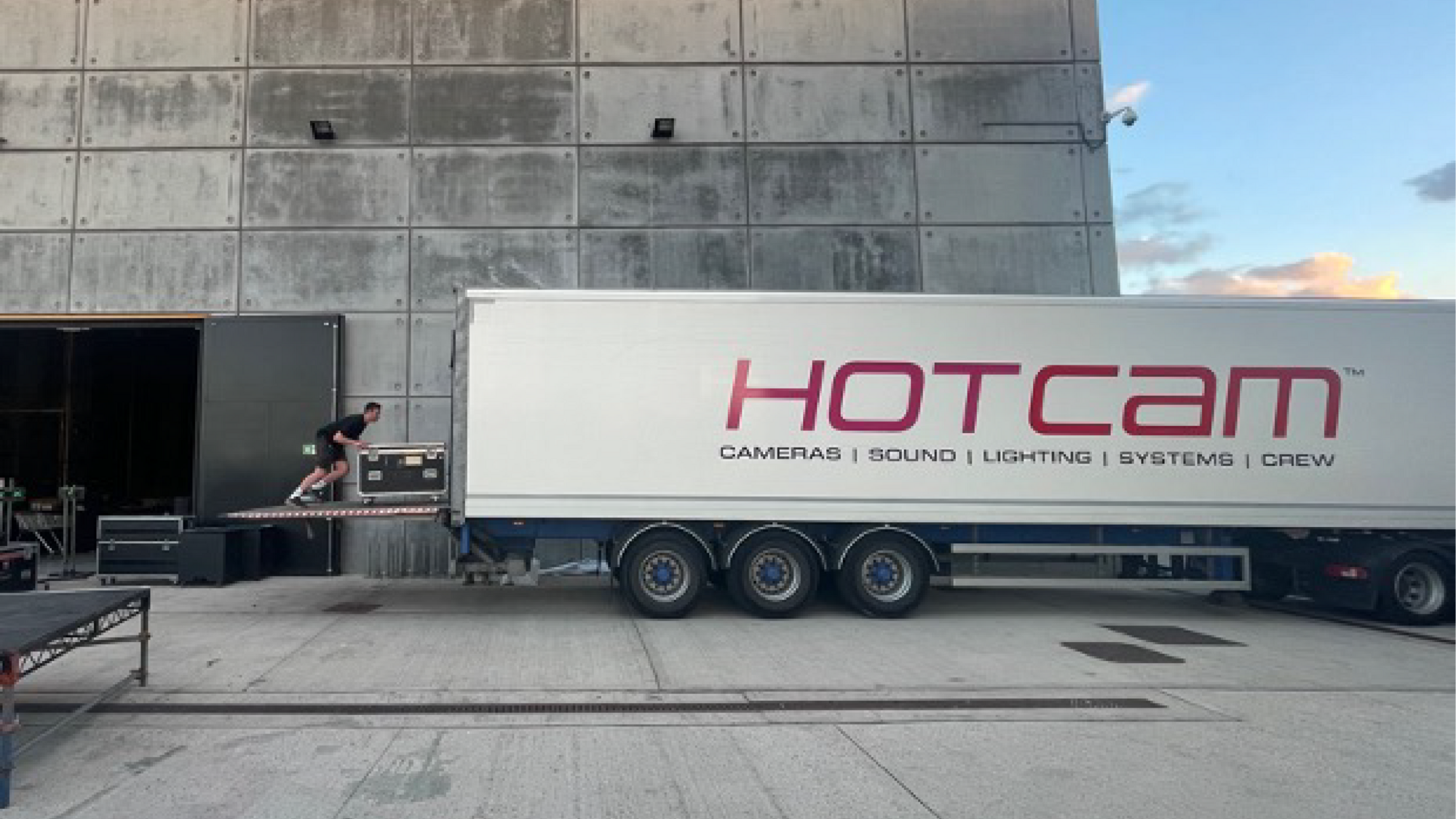
Hotcam has successfully navigated turbulent times since the management buyout in 2022. What is your secret?
Our growth has really been about providing good people and expertise at HOTCAM. When Pete and I took over through the MBO (Management Buyout), we had a clear vision for what TV needed, and we were fortunate to receive an incredible amount of goodwill from the production community. That support was crucial in building our initial momentum, and it has continued to drive our success to date. A big part of this has been bringing in the right people – those who share our values and dedication.
The TV landscape has changed dramatically over the past two years, creating opportunities to adapt and pivot. While some genres have seen a significant decline, the market has also shown resilience. We've also witnessed a resurgence in areas where the complexity of productions makes them difficult for influencers or smaller social media creators to synthesise. These types of projects play directly to our strengths and expertise at HOTCAM.
Our team has worked tirelessly to seize every opportunity, navigating market shifts and the unspoken challenge of rising interest rates. It hasn’t been easy – there's been a lot of personal sacrifice to keep the business stable and our staff secure. Through it all, we’ve built a loyal client base, and we’re immensely grateful for their trust in us. Our commitment to always being there for our clients has been a cornerstone of our resilience during tougher times.
In what ways has evolving technology impacted the company over the period?
The defining commercial and technical trend of the past decade has been the gradual reduction in barriers to entry. Today, anyone has the potential to become a content creator. However, while technology has become more accessible, the expertise required to deliver complex multi-camera productions remains unchanged.
There’s been a lot of attention on evolving technologies, but in the areas where we operate, meaningful advancements in camera technology have plateaued. New ‘high-end’ cameras like the Alexa 35 and Venice 2 now function more as post-production tools than as acquisition tools. In the non-scripted space – and for most multi-cam projects we handle – there’s often no need to fully utilise these advanced features as the rental price of the asset and step up in post-production costs is hard to justify, particularly at scale when budgets are tight.
However, the same market forces that have made video creation more accessible have also opened up previously exclusive sectors like outside broadcasting (OB) to smaller facilities companies. This shift has allowed us to benefit from the same dynamics that have empowered individual creators and smaller operators, enabling us to compete more effectively in spaces that were once the reserve of much larger players.
AI is a current industry hot topic - are you finding customers are looking for AI solutions? If so, what are they asking for?
AI hasn't impacted the services we offer our clients directly, yet. This may not age well, but we are still a long way from AI being able to create a convincing or compelling portrayal of the human experience, in part which is represented on many of the nation’s favourite dating and competition shows. While there's no doubt that AI will have a profound effect on the creative industries, it's hard to imagine viewers tuning in to watch AI-generated models in a reality TV setting.
In terms of the physical act of camera operation, we anticipate that sports coverage, and perhaps fixed rig might be the first genre we deal in to be affected – however, these changes are likely still five to ten years away. We’ve seen some interesting AI advancements in post-production, like tools for logging, cleaning up noise profiles or rescaling resolution, but the part of the production pipeline we focus on remains largely untouched.
We can see AI making significant strides in the scripted and commercial spaces in a shorter time frame, but those aren't areas we operate in, nor do we plan to. Ultimately, AI struggles to synthesise the subtle, inherently human moments that are crucial in storytelling. AI can’t feel, and that emotional depth is essential to what makes well crafted non-scripted TV resonate.
What other technologies are your customers looking at currently, and how are you helping them meet that demand?
We put a huge amount of effort into understanding our clients' needs with a view to introducing technology that streamlines their productions. Our philosophy is that the workings of a solution should be almost invisible —we want our clients to be able focus entirely on the creative and editorial unhindered. Anything we can do to eliminate friction points is a step in the right direction.
Mike Ransome, our Head of Audio, has done some phenomenal work with the freelance sound community, developing wireless multi-channel IEMs. These innovations have significantly reduced restrictions on how story producers and loggers operate on location, giving them more freedom and flexibility to focus on their work.
Do customers always understand exactly what they need to complete their productions?
Customers always have a clear vision of what they want to achieve, but they may not always know the best way to get there from a technical point of view. We frequently see a lot of waste on budget-conscious productions because the conversation around technology and crewing didn’t start early enough, or even worse, they have relied on unqualified advice at early stages.
Without a doubt, our most successful projects are those where we have long-standing relationships with clients and are brought in during the pre-budget phase. Hotcam has been on location, specialising in non-scripted and multi-cam productions for twenty-five years. There’s not much we haven’t encountered, and we bring a wealth of experience to every project we support.
The company has recently worked on the UK version of Love Is Blind - can you expand on the role Hotcam played?
We managed key technical aspects of the production by utilising all our departments: camera, audio, comms, engineering, and logistics. We assembled their PSC and PD/DV kits and managed the carnets from a production management perspective. Our project managers ensured that third-party suppliers were seamlessly integrated into the pipeline, creating a smooth transition between acquisition and post-production.
Additionally, we hosted internal HOD technical meetings, ensuring that when the client arrived on location, the technical framework was already in place. By combining our in-house technicians and assistants with experienced freelancers, the client benefited from an established, proactive, and friendly culture of problem-solving at every step.
How did Hotcam get involved with the show?
We put a lot of effort in to support our clients and pride ourselves on building strong, lasting relationships. Our reputation in the industry is built on word-of-mouth recommendations from the many talented people we’ve had the privilege to work with and this connects us with shows like Love is Blind.
Our cross-departmental offering is unique in the non-scripted space and clients like working with us because of the sense of community on location and culture of proactive problem solving. There is a sense that we are now seen as a technical production partner - not just a rental or facilities house.
What sort of equipment was required by the production (please give as much technical detail as possible)?
Much of the technology we deployed was driven by our understanding of the critical role communication plays on location. We implemented digital Riedel Bolero comms alongside our bespoke wireless IEMs package. Additionally, we deployed multi-channel digital Shure Axient systems for audio capture, which have impressed us with their range and quality, making them highly versatile for non-scripted shoots that require flexibility.
Our camera packages were primarily centred around the Sony FX range, including FX9s, FX6s, and FX3s, paired with premium Canon PL zoom lenses like the CN10s and CN7s. And of course, a full complement of accessories from manufacturers such as EasyRig, Sachtler, Arri and Bright Tangerine. From an engineering point of view; we’ve found the Stage Racer 2 from Ereca can significantly reduce our technical footprint and expedite rigging.
What were the biggest challenges you faced?
With shows like Love is Blind, Britain’s Got Talent, and The Jury, we tend to encounter fewer challenges because of our cross-departmental influence. Most of the difficulties in TV production aren’t technical; they arise from communication issues or siloed decision making. By offering a complete solution, we ensure that contributions from each department are harmonised and aligned, all while remaining mindful of the budget. This cohesive approach allows us to streamline the production process and deliver a higher-quality, better value product, resulting in fewer friction points, allowing everyone to focus on making great TV.
What other projects are you working on at the moment - and how is Hotcam’s business being impacted by the slow down in production in the UK over the last 12 months?
COVID and the writers' strike, while significant, were ultimately temporary disruptions rather than broader market shifts. To understand the current changes in commissioning, attention needs to be focussed on how evolving audience trends are impacting ad revenue distribution. Our observation is that if a genre can be replicated by influencers, user-generated content (UGC), or other online creators, it’s unlikely to make a comeback on ‘traditional’ platforms.
While the last two years have been rocky, we’re starting to see a resurgence in high-barrier-to-entry content that can only be produced by experienced professionals. We believe advertisers are beginning to recognise that and despite the shift in viewership, the Instagram generation still has a strong interest in reality, dating, and competition content. The question going forward is not whether these formats will be made, but what platforms they will be shown on.
Does Hotcam work with companies outside of the UK, and if so how?
We collaborate with clients from all over the world - the UK remains an attractive market for television production. While scripted content often gets the spotlight, it's important to remember that we are world leaders in non-scripted and entertainment television. The UK boasts some of the best producers and most capable crews, and we have been successfully developing formats for global audiences for decades. If you're looking to produce non-scripted TV, partnering with a UK production company is the way to go; they excel in this field.
Hotcam has sought to promote gender diversity in the industry. How have you achieved this and how has it helped you?
I wouldn’t say we have achieved this - there’s always more work to be done - but we are consciously striving to make progress.
When any section of an industry is disproportionately weighted toward one segment of the demographic, it becomes intrinsically more difficult for those outside that demographic to feel included and comfortable participating. Our focus has been on opening up and professionalising rental by investing in management training, rolling out proper recruitment processes, and launching welfare initiatives. To us, professionalism means creating a leadership framework where everyone feels comfortable contributing. For us the outcome has been balanced crews and better outcomes in terms of on-location culture and problem solving.
We feel it is the responsibility of business leaders to consciously challenge existing models and foster an environment where anyone can raise their hand and say, 'I want to have a go.’ We would love to see an ‘Albert style’ initiative for inclusivity and welfare in broadcast television. This would go some way to addressing many of the grass roots training issues in Film & TV which at the moment are not being adequately addressed by industry leaders.
Looking over the horizon, what developments can you see coming for Hotcam and for the wider industry?
The market will continue to evolve, but this change isn’t primarily driven by capture technology; it’s fundamentally about how media is consumed. There’s considerable discussion around how 16-35 year-olds are moving away from traditional TV in favour of social media. However, this demographic still has a strong affinity for dating and competition-based shows. Complex formats and major human-interest stories require large, skilled teams – often numbering in the hundreds – to execute successfully, regardless of technological advancements. While influencers and user-generated content (UGC) may encroach on the single-camera space, few can produce content that matches the creative or editorial production values of major entertainment shows.
As the international streaming market competes for audience share by producing shows of increasing spectacle, we believe that global commissioning is looking to the UK as a leader in delivering high-production-value, large-scale non-scripted productions. With this in mind, we are focused on consolidating our market position. Our goal has always been to achieve the scale and breadth needed to meet the demands of the international streaming market.
We will continue to double down on non-scripted and multi-camera content—there is no other production community in the world that rivals the UK in this regard, and we are committed to investing in the next generation to ensure this remains the case.

